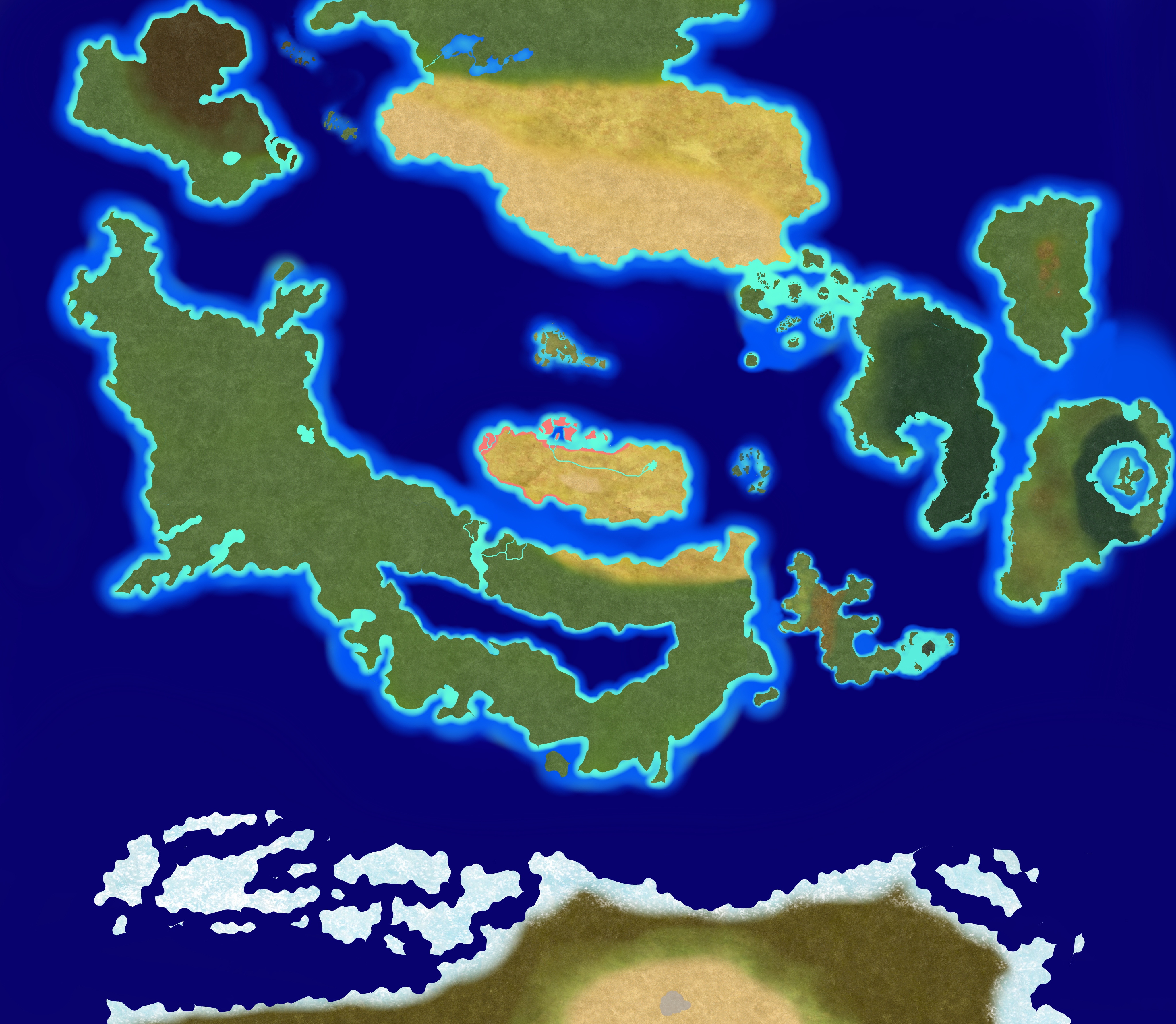Beach Stork
Ammoperipitas rexia
Ammoperipitas rexia (Beach Stork) is not a true stork, its ancestry lies in the family Phorusrhacidae, also known as the terror birds. Terror birds saw moderate success on the island continent of Juland filling a variety of niches, however after the Dynasty Exchange terror bird species have dwindled in number, leaving two main groups, the brood parasitic terror birds and the Beach Storks.
Beach Storks avoid direct competition with the other predators of Juland by staying near the coasts that surround the island continent. The birds can be seen wandering the sandy beaches searching for crustaceans, mollusks, and whatever the ocean washes up. Unlike their relatives, Beach Storks do not possess long, hooked beaks, their beaks are wider and shorter. The beaks are perfect for exerting the force necessary to crack open hard shells of its preferred prey. The feet of the Beach Storks are flat and its toes are wide, this helps the bird traverse the soft sands efficiently and allows them to move faster on the loose ground when they need to run.
Nesting season begins at the start of the wet season, when tropical storms are more frequent, the storks will move more inland to nest and rear their young and avoid the dangers of being caught on the coast during a storm. Mated pairs bond for life and will take turns traveling back and forth to the coast during mild weather to retrieve food for their chicks. Moving further inland however comes with risks, populations of their brood parasite cousins will also begin their mating season to line with the Beach Storks. Parents must remain vigilant or risk their nest being invaded by an egg that will hatch an average of one week earlier than the others and destroy the parents actual eggs.
Beach Storks avoid direct competition with the other predators of Juland by staying near the coasts that surround the island continent. The birds can be seen wandering the sandy beaches searching for crustaceans, mollusks, and whatever the ocean washes up. Unlike their relatives, Beach Storks do not possess long, hooked beaks, their beaks are wider and shorter. The beaks are perfect for exerting the force necessary to crack open hard shells of its preferred prey. The feet of the Beach Storks are flat and its toes are wide, this helps the bird traverse the soft sands efficiently and allows them to move faster on the loose ground when they need to run.
Nesting season begins at the start of the wet season, when tropical storms are more frequent, the storks will move more inland to nest and rear their young and avoid the dangers of being caught on the coast during a storm. Mated pairs bond for life and will take turns traveling back and forth to the coast during mild weather to retrieve food for their chicks. Moving further inland however comes with risks, populations of their brood parasite cousins will also begin their mating season to line with the Beach Storks. Parents must remain vigilant or risk their nest being invaded by an egg that will hatch an average of one week earlier than the others and destroy the parents actual eggs.




Comments